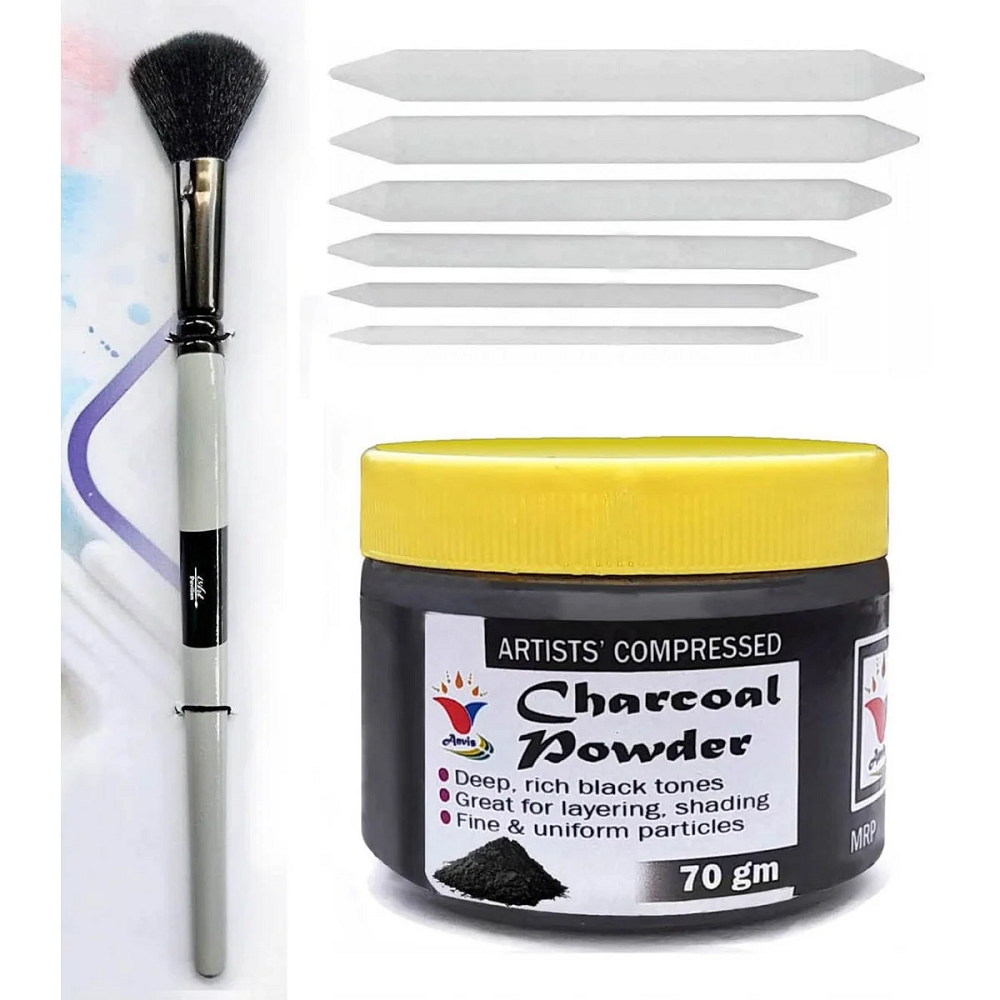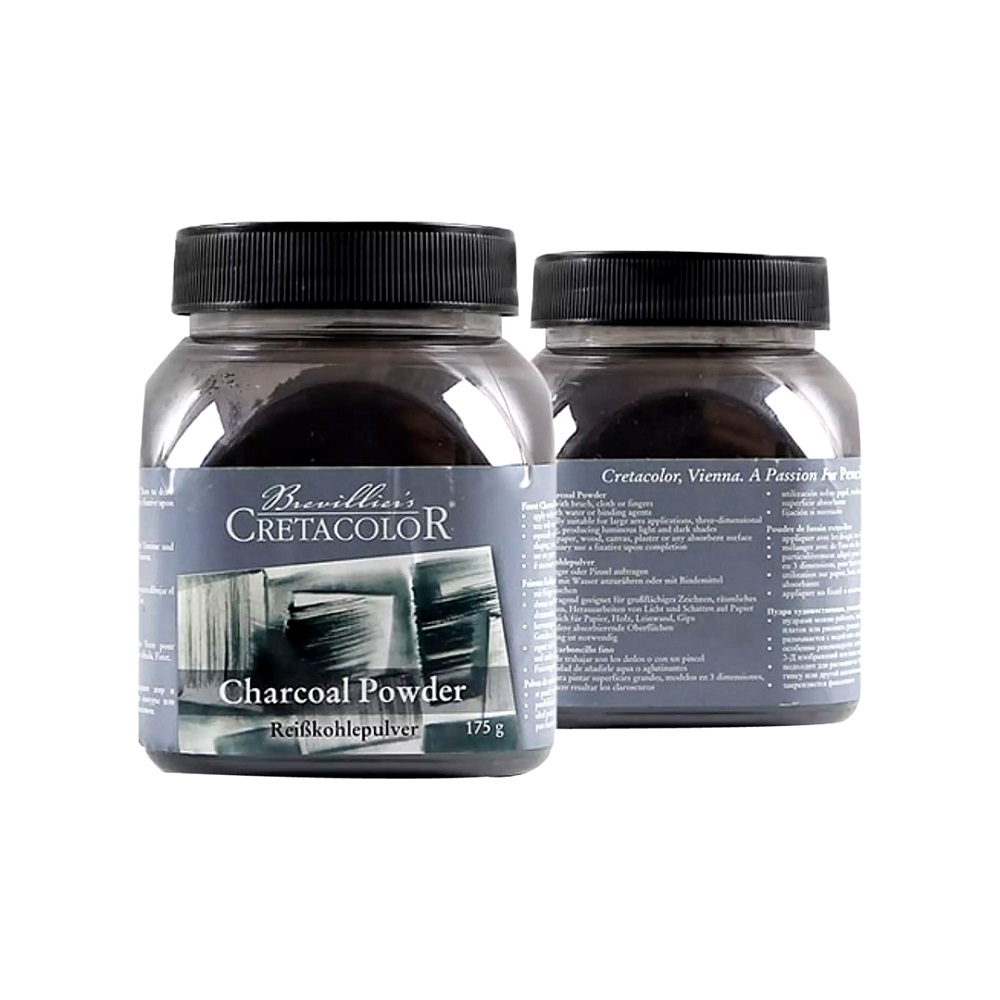Charcoal powder is a versatile medium that can enrich an artist’s drawing repertoire. Its capacity to create a wide range of textures and tones—from the faintest whisper of gray to the richest black—makes it a valuable tool for artists. Whether you’re a novice draftsman or a seasoned professional, understanding how to incorporate charcoal powder into your drawings can open up a new spectrum of creative possibilities. This article introduces key techniques and considerations for effectively integrating charcoal powder for drawing into your artistic practice.
Understanding Charcoal Powder Basics
The Nature of Charcoal Powder
Charcoal powder is finely ground charcoal that lends itself to creating smooth gradients and deep shadows. Artists often use it to lay down a base tone, from which they can build the drawing by adding or removing material. The natural properties of charcoal make it a forgiving medium suitable for experimentation and expression.
Selecting Your Materials
To begin using charcoal powder, you’ll need the powder itself, along with paper that has a good tooth (texture) to hold the charcoal. A kneaded eraser and blending tools like stumps, tissues, or chamois are also essential. Optionally, a fixative spray will help to preserve your work once completed.

Preparing Your Workspace
Creating a Clean Environment
Charcoal powder can be messy, so it’s important to prepare your workspace accordingly. Work on a flat, stable surface, and consider laying down newspaper or a disposable cloth to catch stray powder. Keeping your space neat will allow you to focus on your drawing without worrying about cleaning up.
Organizing Tools for Easy Access
Arrange all the necessary tools within easy reach before starting. This setup minimizes interruptions to your workflow, helping you maintain concentration. It also prevents accidental smears or spills while searching for your tools amidst drawing.
Techniques for Applying Charcoal Powder
Building Up Tones
Start by lightly sprinkling charcoal powder onto the paper or using a soft tool to apply it. Use a blending stump or a piece of chamois to smooth out the powder, creating even tones. By applying in layers, you can gradually increase the depth and intensity of the shadows.
Mixing with Other Mediums
Charcoal powder combines well with other drawing mediums such as graphite or pastels. Feel free to experiment by using charcoal for the darkest tones and other media for lighter shades and details. Combining charcoal powder with other mediums provides a richer range of tones and can add complexity to your work.
Achieving Texture and Detail
Using Negative Drawing Techniques
Negative drawing is a technique where you remove charcoal powder to reveal lighter tones and highlight details. With a kneaded eraser, you can gently lift off charcoal to create various textures or refine details in your drawing. This method is particularly effective for creating the illusion of light within a composition.
Layering for Depth
To give your drawing more depth, layer different amounts of charcoal powder and blend them to achieve the desired texture. This approach is especially useful for creating the look of fur, foliage, or other complex surfaces. Layered texture adds interest and realism to your artwork.

Mastering Blending for Smooth Gradients
Using Tools for Blending
Blending is a crucial technique for working with charcoal powder. Soft tools like stumps, brushes, or even your fingers can be used to blend the charcoal on the paper, softening transitions between shades and creating smooth gradients. Each tool will offer a different quality of blend, so explore various options to achieve the effect you want.
Understanding Timings and Pressure
The key to effective blending is understanding the right time to blend and how much pressure to use. Blending too soon can muddy your tones, while blending too late might not soften the edges as desired. Practice will help you find the right balance and touch for different effects.
Finishing Touches and Fixing Your Work
Refining with Precise Erasing
Final touches can make a significant impact on your drawing. A detailed eraser, like a pencil eraser, can help you refine edges and create sharp contrasts. This precision erasing can bring elements of your drawing into focus and clean up any unwanted smudges.
Preserving with Fixative Spray
Once satisfied with your drawing, use a fixative spray to protect it. Hold the can at a distance and spray evenly across the work. This step will prevent the charcoal from smudging or transferring, ensuring that your artwork stays as you intended.
Conclusion: Expanding Artistic Horizons
Embracing a New Medium
Incorporating charcoal powder into your drawing practice can offer a new dimension to your work. It challenges you to think differently about tone, texture, and composition, which can lead to unique and striking artistic expressions.
Continued Practice and Experimentation
As with any new medium, practice is crucial. Continually experimenting with charcoal powder will enhance your skills and confidence, allowing you to fully appreciate the medium’s potential in your drawing repertoire.

Starting with a Strong Foundation
The Versatility of Underdrawings
Begin your charcoal drawing with a light pencil sketch, or “underdrawing,” to lay out the composition and basic forms. This helps you plan the placement of shadows and highlights effectively. The underdrawing acts as a map for where to apply charcoal powder, which can then be built upon with confidence.
Gradual Layering for Dynamic Results
Gradual layering is key when working with charcoal powder. Start with a light application, and slowly build up to the darker tones, allowing you to control the composition’s overall dynamic range. This approach produces drawings with a compelling interplay of light and dark.
Managing Charcoal Powder Mess
Minimizing Charcoal Dust
To keep your workspace clean and your drawing crisp, minimize the dispersion of charcoal dust. Roll up a piece of paper, or use a small funnel, to direct the charcoal powder onto specific areas of your canvas. This targeted approach helps contain the mess and allows for concentrated application where needed.
Embracing the Inevitable
While charcoal powder can be messy, it’s essential to embrace the chaos to some extent. Sometimes, the accidental smudge or unexpected dispersion of powder can add an intriguing element to your work. Keep an open mind during the process, and incorporate these serendipitous moments into the final piece.
Harnessing Light and Shadow
The Drama of Light
Charcoal powder, with its rich dark tones, is particularly suited for drawings emphasizing dramatic lighting. Use the deepest blacks to contrast sharply with lighter areas, harnessing the medium’s strength to create a sense of light emanating from within your drawing.
Creating Shadows with Substance
Shadows are not simply the absence of light; they have substance and form. When drawing with charcoal powder, consider the thickness and softness of the shadows in your composition. Use blending tools to give depth and a sense of volume to the shaded areas.
Portraiture with Charcoal Powder
Capturing Human Expressions
Charcoal is an admired medium for portraiture due to its ability to capture a range of human expressions. Use a light touch with charcoal powder to build the subtle tones of the skin and a heavier hand for defining features. This can make for some truly expressive and lifelike portraits.
Detailing with a Pointed Tool
For fine details, such as eyelashes or the texture of hair, a pointed tool coated in charcoal powder can be used. Lightly dragging the tool over the surface allows you to create sharp lines and intricate details that bring a portrait to life.
Incorporating Color and Charcoal
Combining Charcoal with Pastels
Experiment with integrating pastels into works primarily using charcoal. The matte finish of charcoal provides an excellent underpinning for the expressive colors of pastels. This combination can enliven your drawing and add an extra dimension of warmth or vibrancy.
The Charcoal Wash Technique
To introduce a watercolor effect, consider using a charcoal wash. Dilute charcoal powder with water and apply it with a brush for a softer, more fluid application of tone. This technique adds a painterly quality to charcoal drawings and allows for experimental approaches to tonal work.
Storing and Showcasing Charcoal Artwork
Storing Works Safely
Charcoal drawings require careful handling and storage. Place a piece of clean glassine paper over the surface and store it flat to avoid any contact that may smudge the charcoal. Ensure a dry environment to prevent the paper from warping.
Displaying Drawings with Care
When showcasing charcoal drawings, consider framing behind glass. This protects the artwork from dust, touch, and other potential disturbances. Selecting the right mat and frame can further enhance the drawing’s impact, providing a clean boundary that directs the viewer’s eye to the art itself.
In conclusion, charcoal powder is an expressive and adaptable medium that can significantly enhance an artist’s drawing repertoire. Understanding its basic nature, preparing your workspace, mastering techniques, and ensuring the longevity of your work are all important steps in harnessing the potential of charcoal powder for drawing. With practice and experimentation, artists can leverage the medium to create powerful and nuanced works of art, pushing the boundaries of their creative expression in new and exciting ways.